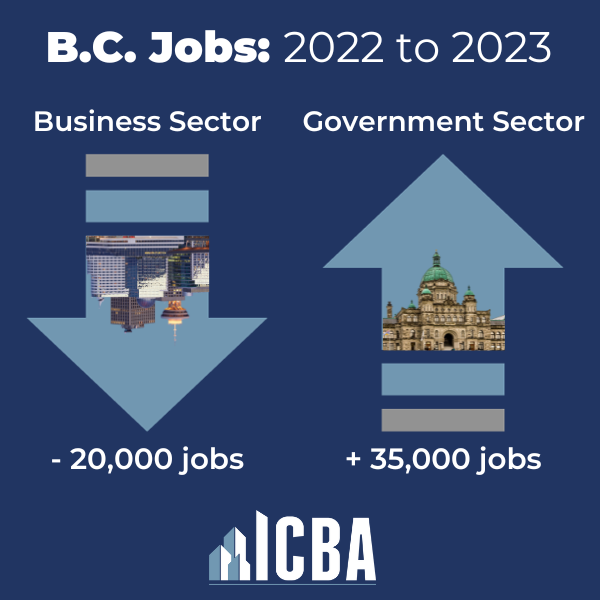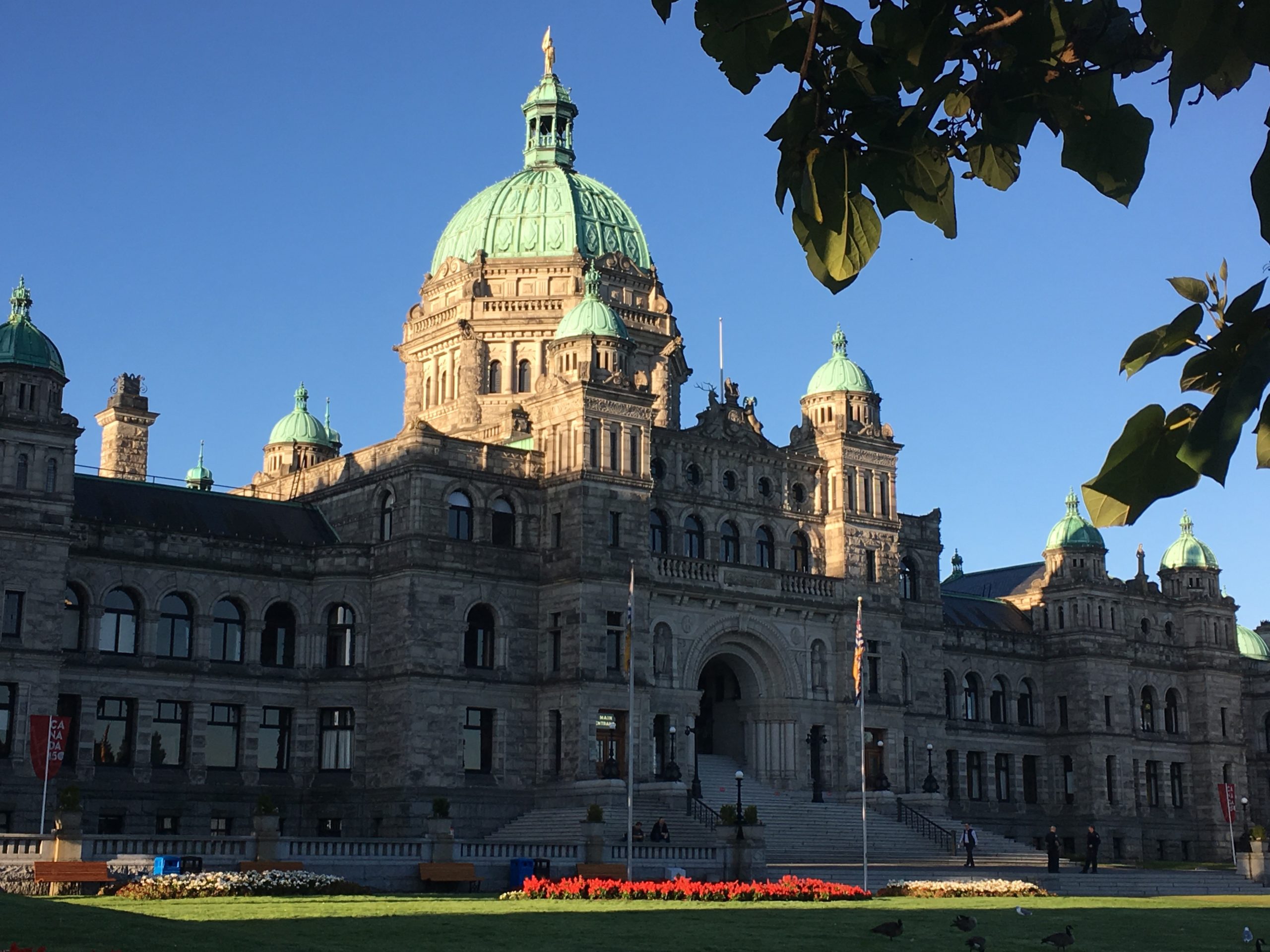This op-ed, written by ICBA Chief Economist Jock Finlayson, first ran in Business in Vancouver Oct. 3, 2023.
As we enter the final quarter of 2023, it’s a good time to step back and ponder the key developments shaping the British Columbia job market. Total employment in B.C. is slightly above 2.8 million, with 178,000 people officially classified as unemployed as of August. What Statistics Canada describes as the “employment rate” – defined as the share of the population aged 15 and older who have jobs – stands at 61.8%, a smidgeon below the Canada-wide average of 62.4%.
 Back in 2019, before the COVID-19 pandemic, 2.68 million British Columbians were employed. Since then, the number has risen by about 135,000. That may sound impressive. However, if we look at the other two big provinces with fast-growing populations – Ontario and Alberta – it turns out that B.C. ranks last among the three, with employment up by 4.7% versus 2019. Over the same period, Ontario and Alberta posted job gains of 7.5% and 8.8%, respectively.
Back in 2019, before the COVID-19 pandemic, 2.68 million British Columbians were employed. Since then, the number has risen by about 135,000. That may sound impressive. However, if we look at the other two big provinces with fast-growing populations – Ontario and Alberta – it turns out that B.C. ranks last among the three, with employment up by 4.7% versus 2019. Over the same period, Ontario and Alberta posted job gains of 7.5% and 8.8%, respectively.
Labour market dynamics have been complicated over the last few years, thanks to the initial impact of the COVID-19 shock in 2020 and the subsequent sharp bounce-back in economic activity as public health restrictions were relaxed, and then removed completely.
One notable trend has been the dramatic increase in the federal government’s payroll. Since 2015, the federal civil service has expanded by 40%, even as the quality of services provided by Ottawa seems to have declined. Many provinces have also joined the public sector job growth parade. In fact, from February 2020 to June 2023, in no province did private sector job creation outpace public sector hiring. Canada’s labour market has become lopsided, with the public sector growing briskly while the private sector adds jobs at a far more languid pace.
This pattern is certainly visible in B.C., where public sector employment has increased steadily while the number of payroll jobs in the business community has dwindled, particularly over the last year. In 2022, B.C. had 1.78 million private sector jobs, measured on an average annual basis. The figure has been inching lower since late 2022, reaching 1.76 million in August 2023 – equating to a net loss of about 20,000 positions. At the same time, public sector employment jumped from an average of 540,000 last year to reach 575,000 in the summer of 2023.
B.C. stands out within Canada for the weakness of job creation in the business community. Since late 2022, the other provinces have experienced positive private sector employment growth, while such jobs have been slowly disappearing here. And if one looks at the medium-term picture, B.C.’s situation is even more unusual: the total number of business payroll jobs has essentially flat-lined since 2019, while public sector employment is 24% higher. No other province exhibits such a stark disparity.
All of this should be a wake-up call for B.C. policymakers, for two reasons.
First, from a government budgeting standpoint, an ever-expanding public sector cannot be fiscally sustained if private sector job creation continues to stall. In the long run, only a growing and robust tax base linked to a healthy private sector economy can generate the revenues needed to pay for public services, government programs, and the salaries and benefits of the people who deliver them.
Second, the eye-catching imbalance between public and private sector job growth suggests the government needs a better understanding of the economic underpinnings of B.C.’s leading industries, including construction, energy and mining, manufacturing, forestry, retail and wholesale trade, finance and real estate, transportation, and the advanced technology sector. There seems to be limited knowledge of most of these economic pillars around the cabinet table.
The past few years have brought billions of dollars of provincial tax hikes on business and industry, along with a significant expansion in the scope and cost of government regulation and intervention across large swathes of our economy. This is now showing up in the form of zero aggregate private sector job growth.
British Columbia policymakers should immediately put a moratorium on new/higher taxes as well as legislative and regulatory changes that are expected to increase business costs. The NDP government should also be thinking about steps it can take to improve the outlook for investment and job creation in the private sector. With the economy losing momentum and business payroll jobs in outright retreat, this task is becoming urgent.

